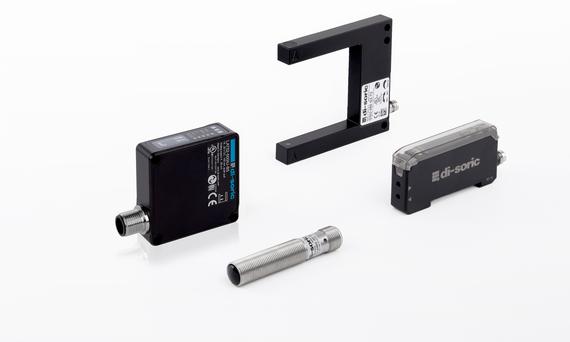What are Optical Sensors?
In the realm of modern technology, optical sensors stand as essential components that harness the power of light to detect and measure various physical phenomena. Unlike traditional sensors that rely on electrical signals, optical sensors utilize light as the primary means of sensing, offering unique advantages in terms of sensitivity, precision, and versatility.

Why are Optical Sensors Used?
Optical sensors find widespread use across diverse industries and applications due to their numerous benefits. These sensors are prized for their high sensitivity, allowing them to detect even minute changes in light intensity, wavelength, or polarization. Additionally, optical sensors offer fast response times, enabling rapid data acquisition and real-time monitoring. Their non-contact nature and immunity to electromagnetic interference make them ideal for use in harsh or hazardous environments where traditional sensors may falter. Helpful resource: https://www.azooptics.com/Article.aspx?ArticleID=2329
What are the Types of Optical Sensors?
Optical sensors encompass a broad range of technologies, each tailored to specific sensing tasks and applications. Some common types of optical sensors include:
-
Photodiodes and Phototransistors: These semiconductor devices convert light energy into electrical signals, making them suitable for applications such as ambient light sensing, optical communication, and proximity detection.
-
Optical Fiber Sensors: By exploiting the properties of light propagation within optical fibers, these sensors enable precise measurements of parameters such as temperature, strain, pressure, and chemical concentration. They find applications in structural health monitoring, industrial process control, and medical diagnostics.
-
Image Sensors: Found in digital cameras, smartphones, and surveillance systems, image sensors capture visual information by converting light into digital signals. They come in various types, including charge-coupled devices (CCDs) and complementary metal-oxide-semiconductor (CMOS) sensors, each offering distinct advantages in terms of sensitivity, resolution, and speed.
-
Laser Sensors: These sensors utilize laser beams to measure distances, detect objects, and perform precision alignment tasks in industrial automation, robotics, and navigation systems. They offer exceptional accuracy and reliability, making them indispensable in critical applications.
Helpful resource: https://www.rfwireless-world.com/Terminology/optical-sensor-basics-and-optical-sensor-types.html
What are the Examples of Optical Sensors in Real Life?
Optical sensors permeate our daily lives in numerous ways, often operating behind the scenes to enhance efficiency, safety, and convenience. Some notable examples include:
-
Smartphone Ambient Light Sensors: These sensors adjust screen brightness based on ambient light conditions, optimizing visibility and conserving battery power.
-
Medical Oxygen Sensors: Optical sensors in pulse oximeters measure oxygen saturation levels in blood, providing vital information for patient monitoring and healthcare diagnostics.
-
Automotive LiDAR Systems: LiDAR (Light Detection and Ranging) sensors use laser pulses to create high-resolution 3D maps of the surroundings, enabling autonomous vehicles to navigate safely and avoid obstacles.
-
Fiber Optic Gyroscopes: Employed in aircraft navigation systems and inertial guidance systems, fiber optic gyroscopes utilize the interference of light waves to detect changes in orientation and rotation, aiding in precise navigation and stabilization.
Helpful resource: https://www.elprocus.com/optical-sensors-types-basics-and-applications/
What is the Difference Between Optical Sensor and Electronic Sensor?
While both optical sensors and electronic sensors serve the purpose of detecting and measuring physical phenomena, they differ in their underlying principles of operation and sensing modalities.
Electronic sensors typically rely on changes in electrical properties such as voltage, current, or resistance to infer variations in physical parameters such as temperature, pressure, or motion. Examples include thermistors, strain gauges, and accelerometers. In contrast, optical sensors utilize light as the sensing medium, detecting changes in light intensity, wavelength, polarization, or phase to measure physical quantities. This reliance on light offers distinct advantages in terms of sensitivity, precision, and immunity to electromagnetic interference, making optical sensors well-suited for a wide range of applications where conventional electronic sensors may be inadequate. Helpful resource: https://pubs.acs.org/doi/10.1021/acssensors.2c02579
In summary, optical sensors represent a cutting-edge approach to sensing technology, leveraging the power of light to enable precise and reliable measurements across diverse applications. With their ability to detect subtle changes in optical signals, these sensors continue to revolutionize industries ranging from healthcare and automotive to aerospace and telecommunications, paving the way for advanced solutions to complex challenges in the modern world.
Facts Checked by Hugh Johnson
Hugh Johnson stands tall in the realms of both the Integrated Circuits (ic Chips) industry and the electronic parts industry, earning acclaim as an esteemed expert in these fields. With an extensive background steeped in semiconductor technology, Hugh's expertise transcends chip design and fabrication, encompassing a profound understanding of electronic components' intricate functionalities and applications. His seasoned knowledge spans diverse facets, from microchip architecture and fabrication techniques to the broader landscape of electronic parts utilized across industries.









